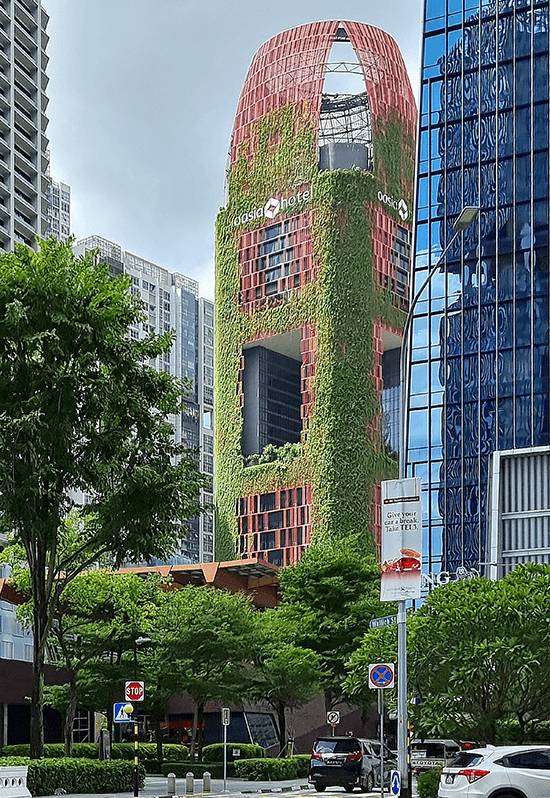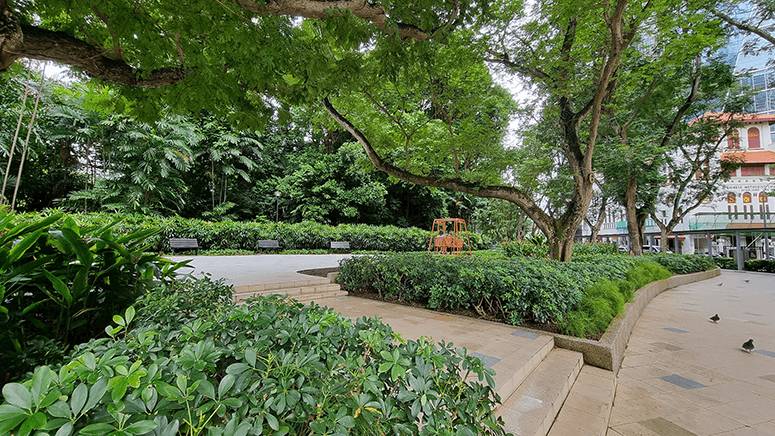A Metropolis in a garden
I finally got to travel overseas recently after three years of the pandemic. I chose Singapore because it is travel-friendly, it was my home for a dozen years before the 2000s, and also because I was invited to speak at a conference organized by the United Architects of the Philippines (UAP) Singapore Chapter.
I had kept up with friends and former colleagues in Singapore by Zoom, of course, but I wanted to visit to see how much the city-state had changed since I last visited in 2017. As it turned out, there was a reunion of my master’s program in Urban Design at the National University of Singapore the same weekend, so I hit several birds with one stone.
I took Cebu Pacific and landed in a new terminal (for budget airlines), noting from the air that more construction and additional terminals were being built to expand the already humongous airport complex. I won’t be surprised if they are already planning a drone terminal and one for rocket shuttles that SpaceX and Virgin Galactic are contemplating.


The green of Singapore is introduced the minute you step into the airport, and it hits you more on the quick drive down the East Coast Parkway, which is now over four decades old. The highway is paralleled by a 20-kilometer linear park. This is about the length of EDSA, sans mind-numbing traffic and festooned with trees and lush greenery. Some of the original planting included native Philippine mussaenda philippica (our Doñas) and are still thriving, though many of the other introduced species are being replaced by native species.

I was billeted off Orchard Road, though the venue of my conference was at the Marina Bay Sands complex. I did not recognize Singapore’s main shopping street, as many more high-rises have been built in the last five years. My old landmarks of The Heeren, Ngee Ann City, and Wisma Atria are still there. I was the landscape architect for these back in the 1990s, and I was glad to see much of my design still maintained. (Maintenance is quite good in Singapore, unlike in the Philippines where buildings and landscapes—except for a few exceptions—are not well tended to.)

I walked up Orchard noting the new constructions, including a futuristic bridge at Somerset, which crossed high above the road at an angle. It was an architectural statement the planning office did not consider when I was there in the ’90s.

Apparently they now encourage these affectations in the name of branding and “likes” on social media feedback. In fact, I noticed on my Sunday morning walk dozens of TikTokers, either Filipinas or Indian men! They were all hogging the prime Instagrammable/TikTokable backdrops and going through endless takes of what appeared to be well-rehearsed choreography. I was tempted to post my own, but did not have the app! Haha! This is a lesson we can all learn, not the choreography, but how to renovate our public spaces to cater to new cultural uses, without, of course, compromising the original character or heritage of the sites.

At the corner of Orchard and Cairnhill Roads was a new and very green structure on what was for the longest time an empty plot of land. Built in 2019, just before the pandemic, Design Orchard is a three-story terraced structure housing incubator spaces for young Singaporean designers along with a retail component on the ground floor fronting Orchard Road.
What sets this structure apart is a landscaped amphitheater that overlooks the busy streetscape below. Lush planting on the roof and the canopy of mature narra trees on two sides provide a cool place to chill almost all hours of the day save for around noon. A café is tucked under the amphitheater.

The design by WOHA, a noted Singaporean architectural firm, is very close to a design concept prepared for the Singapore Tourism Board 20 years ago. It’s great to see the idea brought to fruition. Design Orchard stands out because of its human scale and greenery amid the mega-retail structures that line Orchard Road.
Before heading to the Singapore River from Orchard Road, I noted that the National Parks Board had implemented a change in the original single-species tree planting along both sides of Orchard. Many of the large angsana (narra) trees planted over four decades ago are still there, but now they are interspersed with local trees and a greater variety of planting in a bid to “wild” up what was a fairly consistent but often boring green band of trees and shrubs.

Wilding up the island nation’s public parks and streetscapes is part of the evolving green strategy of the country. Singapore undertook its greening programs a half-century ago under the direction of then Prime Minister Lee Kuan Yew. The first goal was a general greening of the country. This was achieved by planting “instant” quick-growing trees from rooted cuttings, and the lining of all streets and highways with an abundance of tropical planting.
The goal to green up the island was achieved in a decade. Next came the vision to create a “garden city” in the 1980s and 1990s, with an emphasis on the creation of large and small parks. Over 300 parks were built. In the last decade the tagline had become “A City in a Garden.” This was a total immersion of the whole urban fabric in a biophilic environment, where you cannot tell where the city ends and the gardens begin. It looks that way now.

I took the rest of the weekend walking around Singapore’s central and riverside districts. It was great not having to depend on cars to get around. I did not have to deal with mind-numbing traffic, noise or pollution. I visited the business district, and looked in on the displays at the Urban Redevelopment Authority, where the city-state is planned in so much detail that a scale model mimics every building, nook and green corner of the island. Planning is such an open and transparent exercise that all Singaporeans have access to these plans and can submit their feedback and ideas. How I wish we, here in miasmatic Metro Manila, could learn from this.


